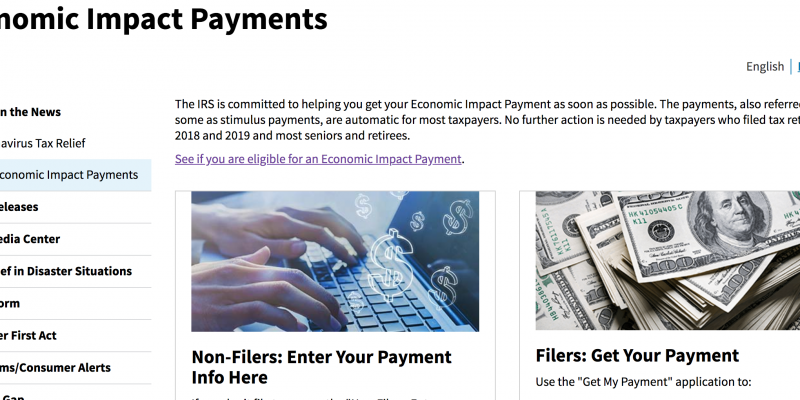The U.S. Treasury Department and Internal Revenue Service (IRS) have made two online tools available to help Americans set to receive coronavirus stimulus payments.
U.S. Treasury Secretary Steven Mnuchin said Monday that as many as 80 million Americans could begin seeing electronic stimulus money directly deposited into their bank accounts as early as Wednesday. They include $1,200 for individuals or head of household filers, and $2,400 for married couples filing jointly, depending on income.
The payments are part of the $2.2 trillion CARES Act relief package signed by President Donald Trump.
“We know many people are anxious to get their payments; we’ll continue issuing them as fast as we can,” the IRS said in a statement. For updates, filers can go here.
The IRS is asking people not to call the agency, and says most receiving the stimulus money will not need to take any action to receive it. The IRS already has information for those who filed taxes for 2018 or 2019 to send them the one-time stimulus payments.
It already has information for stimulus check recipients who receive Social Security retirement benefits, Social Security Disability Insurance benefits, and Railroad Retirement and Survivor Benefits.
The new online tool was not designed for people who already receive federal benefits, including Social Security, SSDI, and Railroad Retirement and Survivor Benefits unless they have children under age 17. These beneficiaries could then use the online tool to claim an extra $500 per child.
For those who didn’t, or who don’t normally file a tax return, like the elderly or low-income earners, the IRS launched an online tool to help them register to receive a stimulus check.
The online tool is specifically designed for individuals who did not file a 2018 or 2019 federal income tax return because their reported gross income was under $12,200 ($24,400 for married couples). This also includes people who had no income.
To use the tool, users can go to IRS.gov, and “Non-Filers: Enter Payment Info Here” and input basic information. The IRS will use the information to confirm eligibility and send an Economic Impact Payment. Users also have the opportunity to enter bank or financial account information to allow the IRS to send the payment through direct deposit. Otherwise, payments will be mailed to the address the IRS has on file.
For security reasons, the IRS announced it plans to mail a letter about the payment to the taxpayer’s last known address within 15 days after the payment is paid. The letter will state how the payment was made and how they can report any failure to receive the payment. If a taxpayer is unsure they’re receiving a legitimate letter, the IRS urges taxpayers to visit IRS.gov first to protect against scam artists.
“The IRS urges taxpayers to be on the lookout for scam artists trying to use the economic impact payments as cover for schemes to steal personal information and money,” according to the IRS website. “Remember, the IRS will not call, text you, email you or contact you on social media asking for personal or bank account information – even related to the economic impact payments.”
The IRS warns Americans to “watch out for emails with attachments or links claiming to have special information about economic impact payments or refunds.”
A second online tool, “Get My Payment,” allows taxpayers to determine when they will receive their payment. It is expected to be up and running by April 17.
Those eligible for checks are those with an adjusted gross income of up to $75,000 for individuals, $112,500 for head of household filers, and $150,000 for married couples filing joint returns.
Taxpayers will receive a reduced payment if their income is between $75,000 and $99,000 if their filing status was single or married filing separately, $112,500 and $136,500 for head of household, and $150,000 and $198,000 if their filing status was married filing jointly.
The amount of the reduced payment will be based upon the taxpayers’ specific adjusted gross income.
Forbes created a stimulus check calculator for individuals and families to determine how much much they should receive.
This article was first published by The Center Square.
Advertisement
Advertisement

